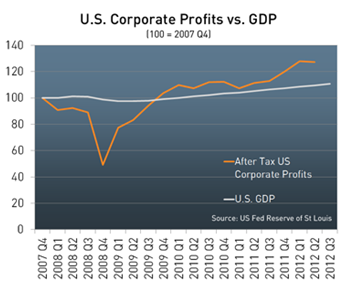“There is good reason to look at
the economic data and say that the workforce situation continues to improve,”
says Rob Romaine, president of MRINetwork. “People continue to see friends and neighbors
going to work and nothing will rebuild sentiment faster than that. Consumer
debt, which is increasing after years of consecutive quarterly declines shows
that people have more confidence in their jobs and in their economic
future."
Adding weight to the deluge of
economic figures, GDP grew at an annualized rate of 2 percent from 1.3 percent
in the second quarter of the year. The figure was more positive than many
economists projected, yet it still is unlikely enough to pull growth in 2012 as
a whole over 2 percent. Such growth, though, is not typically enough to drive
substantial improvements in employment markets, and certainly not enough to
push unemployment down half a percent in two months. Yet, that isn’t
necessarily cause to think that either the employment or GDP figures are incorrect.
Since about 2008, the number of
employees voluntarily leaving their jobs fell significantly as people didn’t
want to, or couldn’t change jobs at the rate they once did. The U.S. quit rate
fell as low as 1.2 percent in late 2009, but has since recovered to 1.6
percent. The rate among workers who feel overworked or under-compensated is
understandably even higher.
“Even if a company isn’t cutting
its staffing levels, it likely is losing employees to churn at a higher rate
today than they were two years ago,” says Romaine. “While through the recession
managers might have tried to cover those losses with existing staff, today
companies have reached a point where most positions vacated need to be
backfilled. If a salary lasted in the budget through the recession, it was a
position worth keeping filled.”
If hiring is increasing, however,
that could very well help add buying power to the economy just in time for the
holiday season, giving a possible boost to fourth quarter GDP.
The United Kingdom recently
experienced a similar situation where employment was growing while GDP was
shrinking. The counter cyclical employment growth was puzzling to many
economists giving it names like 'the employment paradox' and the 'economic
puzzle.' Whatever the cause though, the increased employment likely helped to
lift the UK economy out of recession in the third quarter.
So whether the dog wags the tail,
or the tail wags the dog, 2013 seems to be building the potential for some
upside surprise for both the economy and labor market.

